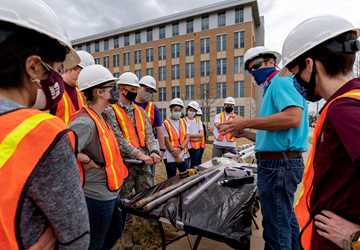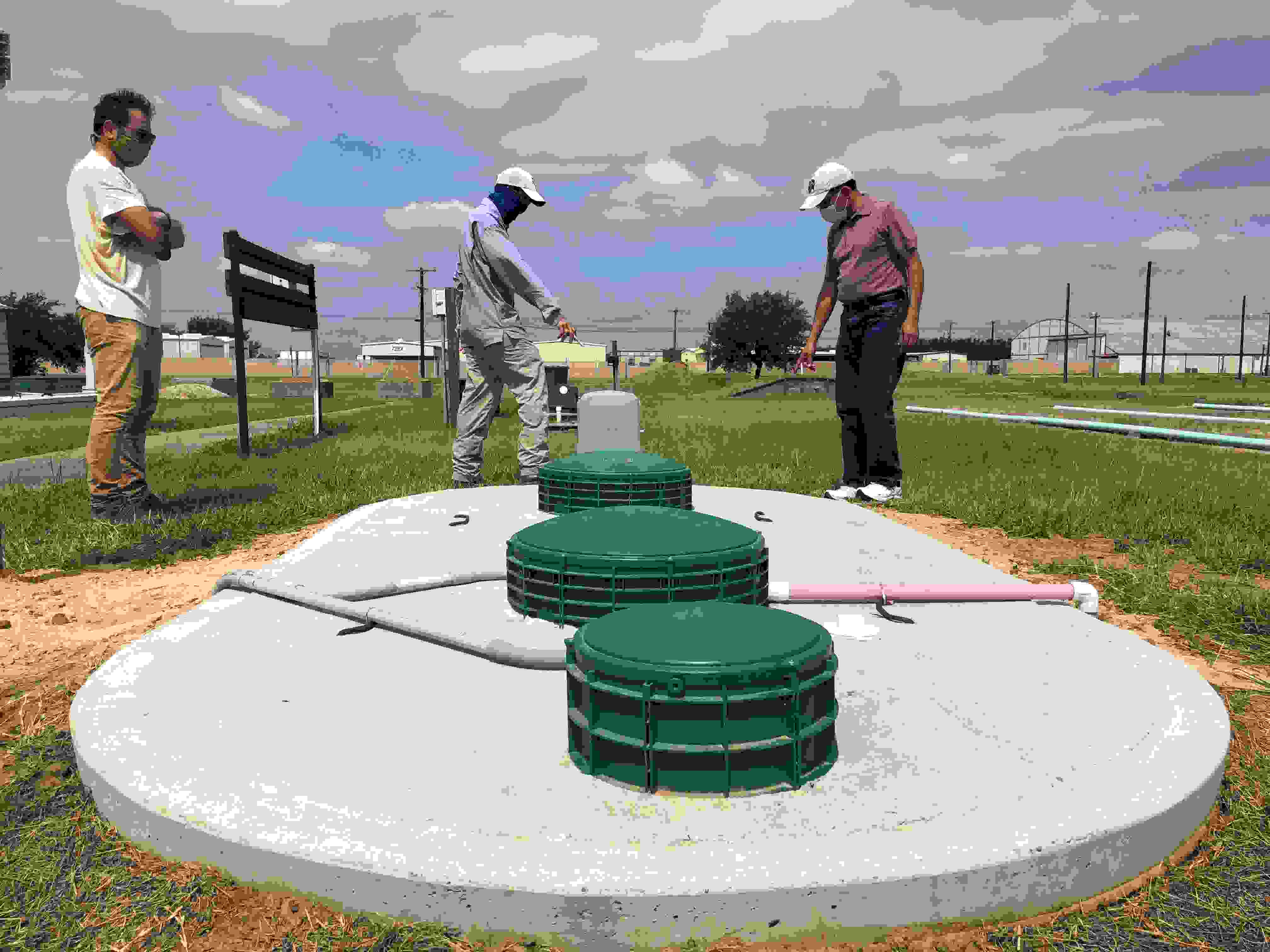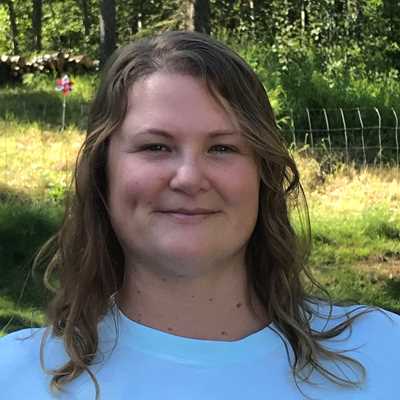Washing and sanitizing bodies, hands, surfaces and clothing are all normal parts of life. When people flush the toilet, take showers and clean the dishes, the resulting wastewater miraculously disappears without much thought. These activities are only possible with a safe and adequate wastewater treatment system.
An effective wastewater infrastructure system is just as important to public and environmental health as it is to personal hygiene. Having an effective, efficient sewage system keeps people safe from polluted water that can transmit waterborne diseases such as cholera, cryptosporidiosis and giardiasis. It can even keep food safe, as contaminated water can lead to contamination of agricultural crops and seafood.
However, there is a growing problem with wastewater infrastructure in the United States. As the population increases, more people are relying on aging wastewater systems and moving into new residential areas. The increased wastewater load taxes existing wastewater systems that need upgrading. Also, as residential areas spread into new geographic areas, people are often turning to decentralized, on-site systems, which also have challenges of their own. However, education, regular maintenance and necessary system upgrades can keep wastewater systems running effectively.
Centralized systems: wastewater treatment plants
Centralized systems or wastewater treatment plants (WWTPs) are the most common type of wastewater treatment. According to the American Society of Civil Engineers (ASCE), there are more than 16,000 WWTPs in the country. On average, these facilities operate at 81% of their designed capacity. They treat about 62.5 billion gallons of wastewater per day.
Estimated reading time: 14 min.
An effective wastewater infrastructure system is just as important to public and environmental health as it is to personal hygiene.
More information
- 2021 Infrastructure Report Card - Wastewater, American Society of Civil Engineers
- Partnership coordinates septic system repair, replacement, Texas Water Resources Institute
- Possible funding options for on-site sewage facilities (OSSF) for individual homeowners, Texas Commission on Environmental Quality
Want to get txH20 delivered right to your inbox? Click to subscribe.
An average American produces about 100 gallons of wastewater per day, or 36,500 gallons per year. With the population increasing approximately 1.8 million people per year, already 15% of the WWTPs in the country exceed their threshold capacity. This situation raises the question of how well these systems will be able to keep up.
Another issue with the wastewater infrastructure in the United States is its age. The ASCE states that WWTPs have a typical lifespan of 40-50 years; however, the average age for WWTPs in the country is 45 years. These aging systems require maintenance and upgrades to continue to perform effectively.
According to the ASCE, “as collection systems age and decline in condition, groundwater and stormwater enter the network through cracks, joints or illicit connections as inflow and infiltration,” which overtaxes the collection systems, causing sanitary sewer overflows (SSOs).
SSOs are when untreated or partially treated water is released from a municipal sanitary sewer, according to the U.S. Environmental Protection Agency (EPA). SSOs pose a public health risk because they contain raw sewage that can carry bacteria, viruses, parasites, molds and fungi. These contaminants can cause health problems, from digestive discomfort to life-threatening conditions such as cholera, dysentery and hepatitis. People can be exposed through contaminated drinking water, direct contact with contaminated water and consuming the shellfish collected from them.
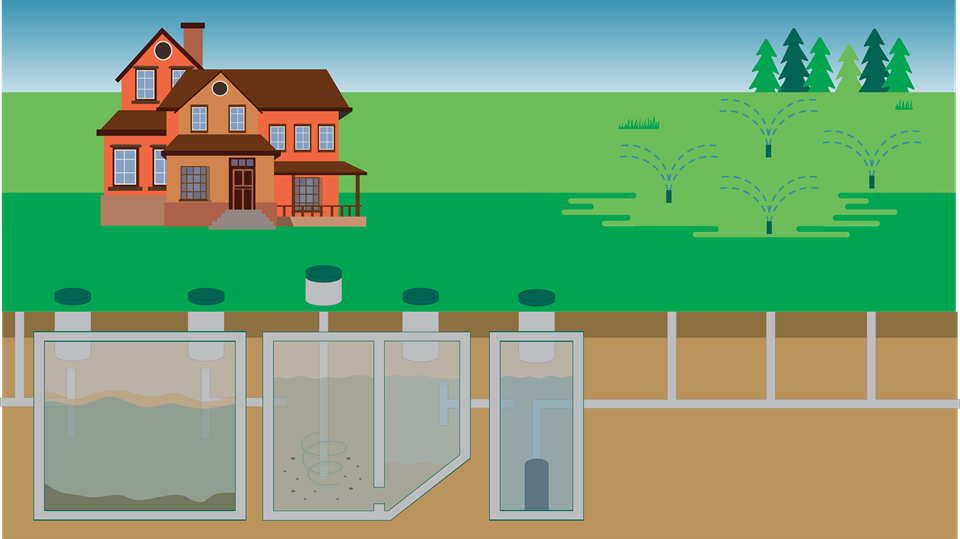
The ASCE reported that between 2012 and 2016, improvements were made to more than 180 of the nation’s large sanitary sewer systems, which are prone to frequent SSOs. There are thousands of miles of sewage pipes buried under increasingly urbanized cities, and maintenance of these pipes will require interagency collaboration and data sharing. In 2019, as much as 62% of wastewater pipeline maintenance was performed proactively by collaborating utilities, and the remaining 38% was completed as a response to failures. However, since 2017, replacement rates for wastewater collection pipes have stagnated.
Additionally, the ASCE estimated that maintenance costs for WWTPs increased 4% each year from 1993 to 2017. The 2020 estimate for maintenance and operation costs throughout the country is more than $3 billion for wastewater pipe repairs and replacements. This translates to more than $18 per person for wastewater customers relying on centralized systems. The cost is projected to increase by an average of 5% annually.
Decentralized systems: on-site sewage facilities
The second type of wastewater treatment is an on-site sewage facility (OSSF), commonly referred to as septic systems. OSSFs operate like WWTPs, but on a smaller scale, to treat wastewater from a single building or buildings from a small community.
According to the ASCE, approximately 20% of Americans rely on OSSFs for wastewater treatment, and that percentage is rising. However, exact numbers for OSSFs are difficult to come by because most states do not collect data on OSSFs. In fact, 1990 was the last year that the U.S. Census Bureau collected OSSF data.
The lifespan of a conventional OSSF (septic tank drain field) is 20-30 years, but due to the lack of data, it is nearly impossible to accurately assess the remaining lifespan or current condition of existing OSSFs. However, one potential way to estimate the age of OSSFs is by the age of houses that might have them. In 2015, the National Association of Home Builders estimated that the average owner-occupied home is 37 years old. This suggests many systems may be past their usual lifespan and may require replacement, particularly if the property owners did not invest in regular proactive maintenance.
The ASCE estimates that regular maintenance totals approximately $250-500 every three to five years for OSSF property owners. Also, according to the OSSF team at the Texas A&M University AgriLife Extension Service, an aerobic system typically has maintenance contracts costing $300 a year, plus they have electrical components that eventually need to be rebuilt or replaced. However, replacing a failing system would cost $6,000-10,000 or more depending on the type of system.
While the financial responsibility for upkeep and replacement tends to fall on the property owner, some states, such as Texas, offer funding to help with system replacement.
All about the money
Solving the aging, overtaxed wastewater systems’ problems in the United States comes down to one issue:
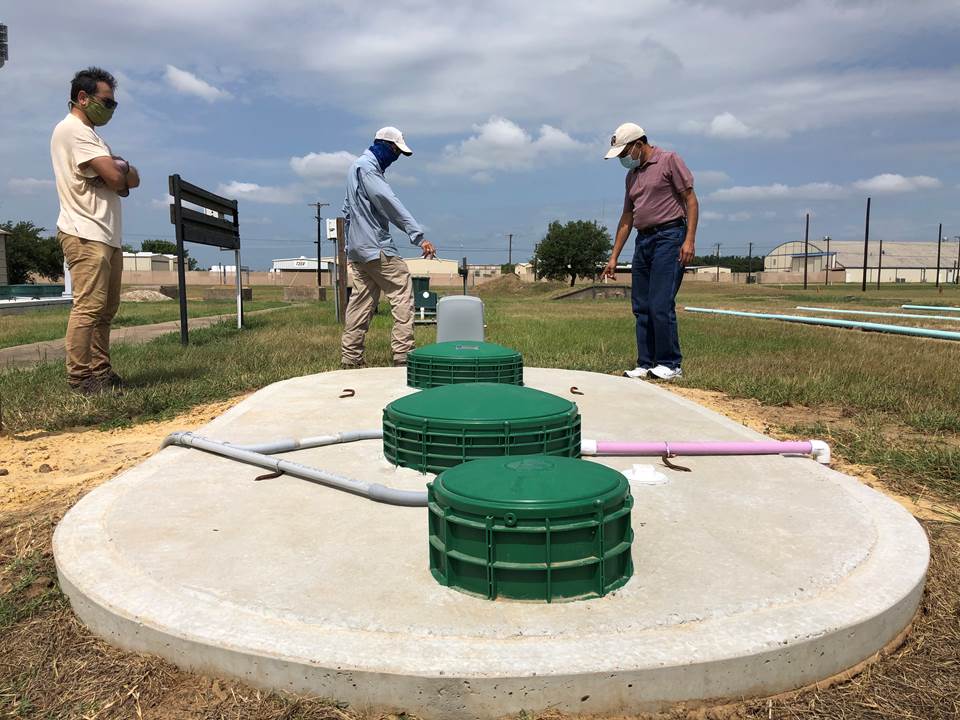
“Money,” said Anish Jantrania, Ph.D., P.E., associate professor and Extension specialist with AgriLife Extension’s OSSF team. “Who wants to pay money on wastewater systems?”
Jantrania explained that funding for proactive maintenance on centralized wastewater systems is a low priority for governments and utilities. Additionally, organized funding to help property owners fix and upgrade OSSFs is either very low or nonexistent because OSSFs are handled differently from sewer systems.
OSSFs in Texas
“One of the big differences between sewer and septic is sewers are a national program; they are regulated under a National Pollutant Discharge Elimination System by EPA,” Jantrania said. However, he explained that OSSFs are regulated at a state level. EPA offers guidelines and recommendations, but there are no national level standards or regulations.
In Texas, OSSFs are regulated by the Texas Commission on Environmental Quality (TCEQ). TCEQ keeps track of permits, limits, related state regulations and more. This permit tracking is a way to help determine how many OSSFs are in use in Texas, where they are and when they were installed. TCEQ also ensures that new OSSFs are meeting the necessary standards.
“We believe septics are as good or better than sewer systems,” said Jantrania.
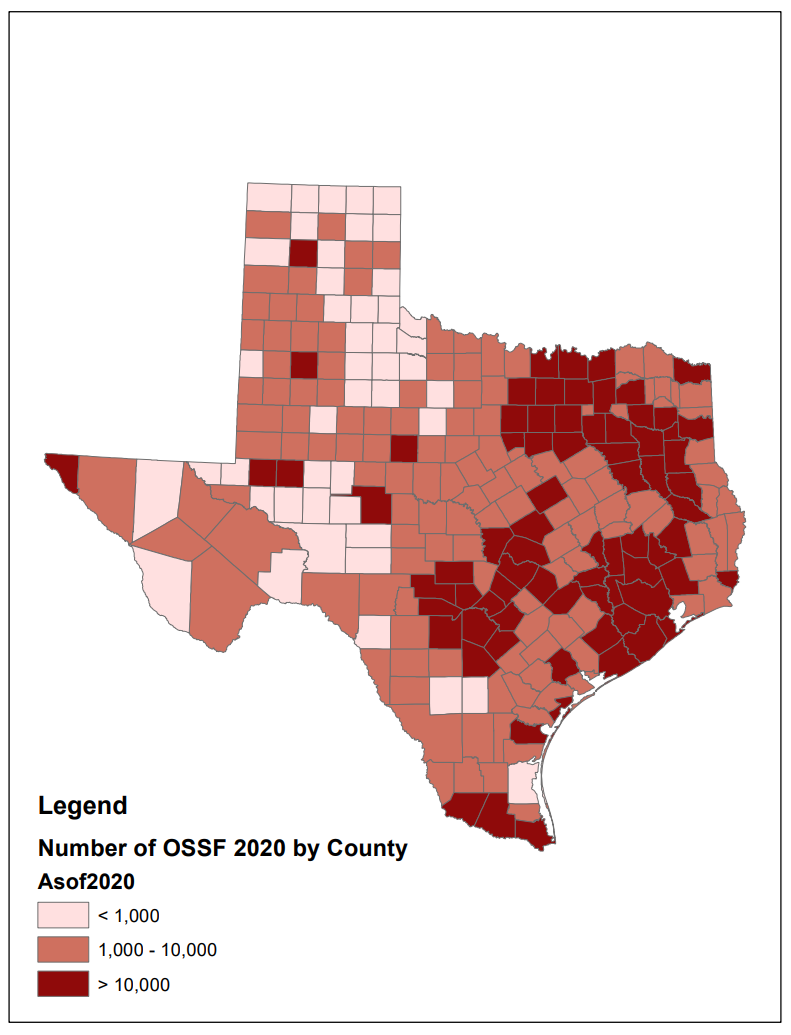
Jantrania explained that when he uses the terms “septic systems” or “septics,” he is referring to any wastewater treatment system that is not a centralized WWTP-type system. Septic systems are widely used in Texas, with an estimated 5.8 million Texans relying on these decentralized wastewater treatment strategies.
A traditional septic system, or an anaerobic system, consists of an underground tank to receive and hold the wastewater and a drain field, which filters the water and allows the clean water to return to the ground. The septic tank is air-tight and relies on bacteria that thrives without oxygen to process the wastewater. This type of system also requires a specific soil type; thus it does not work well in many parts of Texas. However, there are other options for OSSFs today, such as aerobic systems, which use a different process for wastewater treatment that relies on oxygen-loving bacteria.
Gabriele Bonaiti, Ph.D., Extension program specialist with the AgriLife Extension OSSF team, estimated the number of properties in Texas that rely on septic systems by using the U.S. Census data from 1990 and the number of OSSF permits issued by TCEQ since 1992. U.S. Census Bureau data reports houses not connected to sewer, summarized by county. TCEQ data is also summarized by county and also identifies the system type.
“Now, of course, there are probably a lot of little errors in doing this, but this is what we found was the best approach,” Bonaiti said. “So we have a number, updated to December 2020, which is the last available OSSF permits from TCEQ. And we are at 2.38 million systems.”
OSSF regulations and research at Texas A&M RELLIS campus
“Before 1989, there was no statewide guidance for OSSFs in Texas,” said Ryan Gerlich, Extension program specialist with the AgriLife Extension OSSF team. “There were a select number of counties that did have rules before then for installing systems, but not very many.”
A critical rule revision in 1997 mandated that OSSF installers and regulators perform soil and site condition evaluations to determine what type of system to install. The rules have been updated multiple times since, and current rules are available on the TCEQ website.
The OSSF research facility and training center at the Texas A&M RELLIS campus in Bryan, Texas played a key role in the preparation for that 1997 rule change. Gerlich explained that the training center was created in part to meet the new requirements, which mandated that a thorough soil and site evaluation be performed before determining what type of system to install.
We believe septics are as good or better than sewer systems
“The training center was built in 1995 to get ahead of that 1997 rule change,” Gerlich said. “There were several different aerobic systems installed at our training center in a manner that they’re easily visible. It was really to show the installers what was coming up next as far as the aerobic treatment units and so on.”
Much of the research done on OSSFs at the RELLIS campus are funded through a TCEQ grant program that is focused on OSSF research. June Wolfe, Ph.D., associate research scientist with the AgriLife Extension OSSF team, explained that TCEQ funds research so that they can understand how the systems are meeting the state mandates. In addition to research, educating and training OSSF installers, regulators and end users has been a main activity for the AgriLife Extension OSSF team at the RELLIS campus.
“Where they can’t solve a problem with a sewer, then we advise them to use septic,” Jantrania said. “Or, whenever there are problems with a septic, and if they try to connect to the sewer in that area and they cannot, then we help them. A&M is just one of many players in Texas. We help people to solve what’s called failing septic system problems. Our primary business is to educate people on the advances and the new subjects and all that kind of thing. So there are alternatives and a lot of good things in the septic industry.”
Growing population in Texas
Like many other parts of the country, Texas’ population is growing quickly, which impacts the wastewater infrastructure across the state.
“Texas makes up almost 9% of the total U.S. population,” Wolfe stated. “Five of the largest 15 cities in the U.S. are in Texas. That’s Houston, San Antonio, Dallas, Austin and Fort Worth. So we’ve got a large demographic here and a fifth, or about 20%, of that population will rely upon on-site treatment systems.”
Wolfe explained that the need for more OSSFs translates to needing a larger future workforce to design, install and service those systems. He also explained that in order to build that workforce, education and training will be necessary. Providing education and training is what they are doing at the Texas A&M RELLIS campus OSSF research facility.
“We’ll be able to deal with the population increase through improved engineering solutions and improved design efficiencies. And that’s why I point to the Texas A&M OSSF research facility here at the RELLIS campus,” Wolfe said.
The Texas A&M OSSF team is looking at ways to advance OSSF science through the modification and testing of current designs. “In order to increase system efficiencies, test new ideas and develop improvements, we need research,” he said.
Wolfe shared that the research on aerobic treatment systems looks promising.
“We’ve got some on-site treatment systems that we’re studying here on the RELLIS campus called ATUs, or aerobic treatment units. These designs have a smaller installation footprint than a traditional septic system, and they are more efficient because they add oxygen to the system, which speeds and improves the wastewater treatment process.”
Gerlich echoed Wolfe about the promising technology, adding that the aerobic systems work particularly well with Texas soil varieties.
“The aerobic treatment unit is probably the number one thing that is installed,” he said. “If we don’t have the area for a large drainage field or suitable soil conditions, that’s usually the go-to the technology. Space is as, or maybe more, important than soil type.”
Gerlich explained that people across the state would have access to OSSFs, regardless of the soil conditions in their location, using aerobic systems and other developing septic technologies.
“There are a variety of technologies out there to meet all the different variations in soil types. When we talk about soil types for a regular septic tank and drain field to operate, we want a coarser textured soil and the sandier soil or loamy soil. Also, we want unsaturated soil, so we don’t want seasonal water tables within two feet from the bottom of the drain field,” he explained.
We will be able to deal with the population increase through improved engineering solutions and improved design efficiencies.
In areas of Texas with a lot of clay, such as the Brazos Valley or along the Gulf Coast, the high water table makes the conditions unsuitable for a traditional septic system. However, Gerlich said with the continuously advancing technologies, it is possible to come up with a solution for almost every soil condition.
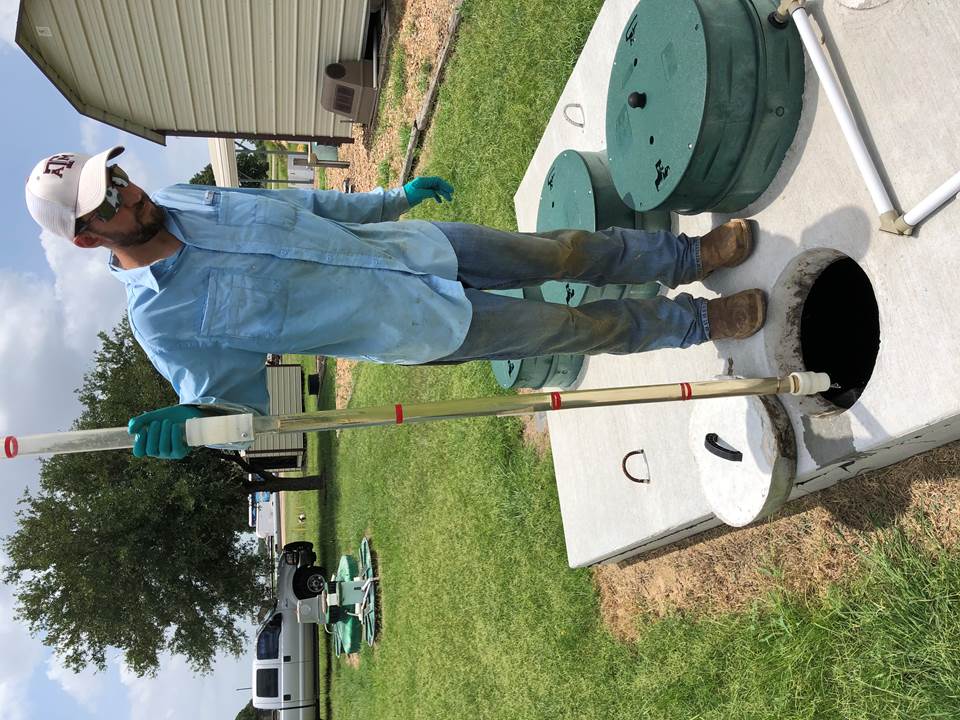
In areas of Texas with a lot of clay, such as the Brazos Valley or along the Gulf Coast, the high water table makes the conditions unsuitable for a traditional septic system. However, Gerlich said with the continuously advancing technologies, it is possible to come up with a solution for almost every soil condition.
Not all OSSF technologies are expensive or cost-prohibitive. However, when OSSF owners are in a situation where they cannot afford to fix or replace a failing system, Jantrania explained that there is funding available to help pay for those projects in Texas. Gerlich has even worked on some government-subsidized OSSF installation and repair projects, including the Coastal Zone Act Reauthorization Amendments, Tres Palacios Creek and Lampasas River Watershed.
“A lot of the ones that we replaced were on the coast. And they were old homes, most of them were homes from the '50s and '60s that were originally built as a weekend fishing cabin. So when it was originally built, they put in a 200 gallon septic tank and 50 feet of drain field,” Gerlich said. “But there were only a couple people there a weekend or two a month, and that was about it. And now people have moved into those houses full time, so they are overloading that really old system.”
As the population increases, technologies advance and change, and the OSSF training facility continues to provide education for installers, regulators, designers and end users.
Gerlich explained that professionals in the industry are required to have 24 hours of continuing education every three years to renew their licenses, allowing them to learn about new technologies.
Looking to the future
Jantrania explained that one of those new technologies, aerobic systems, was the biggest environmental advancement made in the 1990s. Researchers at the RELLIS campus continue to focus on improving these systems.
Disinfection systems are another new aspect of the OSSF process that researchers are investigating. So far, adding a liquid chlorinator or an ultraviolet light to aerobic systems has shown promise for improving system disinfection.
“We are actually looking at ozone at our center, so we can have some new concepts for disinfection,” Jantrania said. “And the biggest research that we are guiding now is reuse. Texas is big on reuse of wastewater on the municipal scale, and our goal is to make sure some of those advancements in reuse technologies are also available to on-site folks.”
Another future advancement in sewage treatment that Jantrania anticipates is nutrient reduction. He explained that Texas has some nutrient-sensitive areas, specifically groundwater with nitrate contaminants.
“Nitrogen and phosphorus are the nutrients in wastewater, and if they get into groundwater or surface water, they become a pollutant rather than a beneficial thing,” Jantrania explained. “So, what we try to do is either remove it before discharge or try to reuse it by growing vegetables or whatever else you can grow so that the nutrients become a resource rather than a pollutant.”
The bottom line
Despite the challenges of population growth and aging water infrastructure systems across the country, wastewater treatment in Texas has a bright outlook. OSSFs provide a solution to growing wastewater treatment needs based on a growing population, as they can be installed in new residential areas with no sewer access and can be more economical than connecting to existing sewer systems. The OSSF Center at the Texas A&M RELLIS campus provides Texans a unique and proactive resource for OSSF education and solutions.
To address the issue of cost, there is financial help available for Texans in need of assistance for OSSF replacement. Additionally, since OSSF technology is continuing to adapt and improve due to the work done at the RELLIS campus, OSSF systems are becoming more efficient and economical.
Through the education and research, the AgriLife Extension OSSF team is there to help Texans navigate the world of OSSFs and step into the future of wastewater treatment.
“You find water, and you find energy; we take care of sewage,” Jantrania said. “That should be our slogan.”
Explore this Issue
Authors
September Martin is a former graduate communications intern for the Texas Water Resources Institute. September worked with the institute’s communications team to increase visibility and understanding of water science and management issues in Texas and beyond. She wrote articles for TWRI publications, assisted with editing content for a variety of outlets and helped with other projects and tasks as needed.




